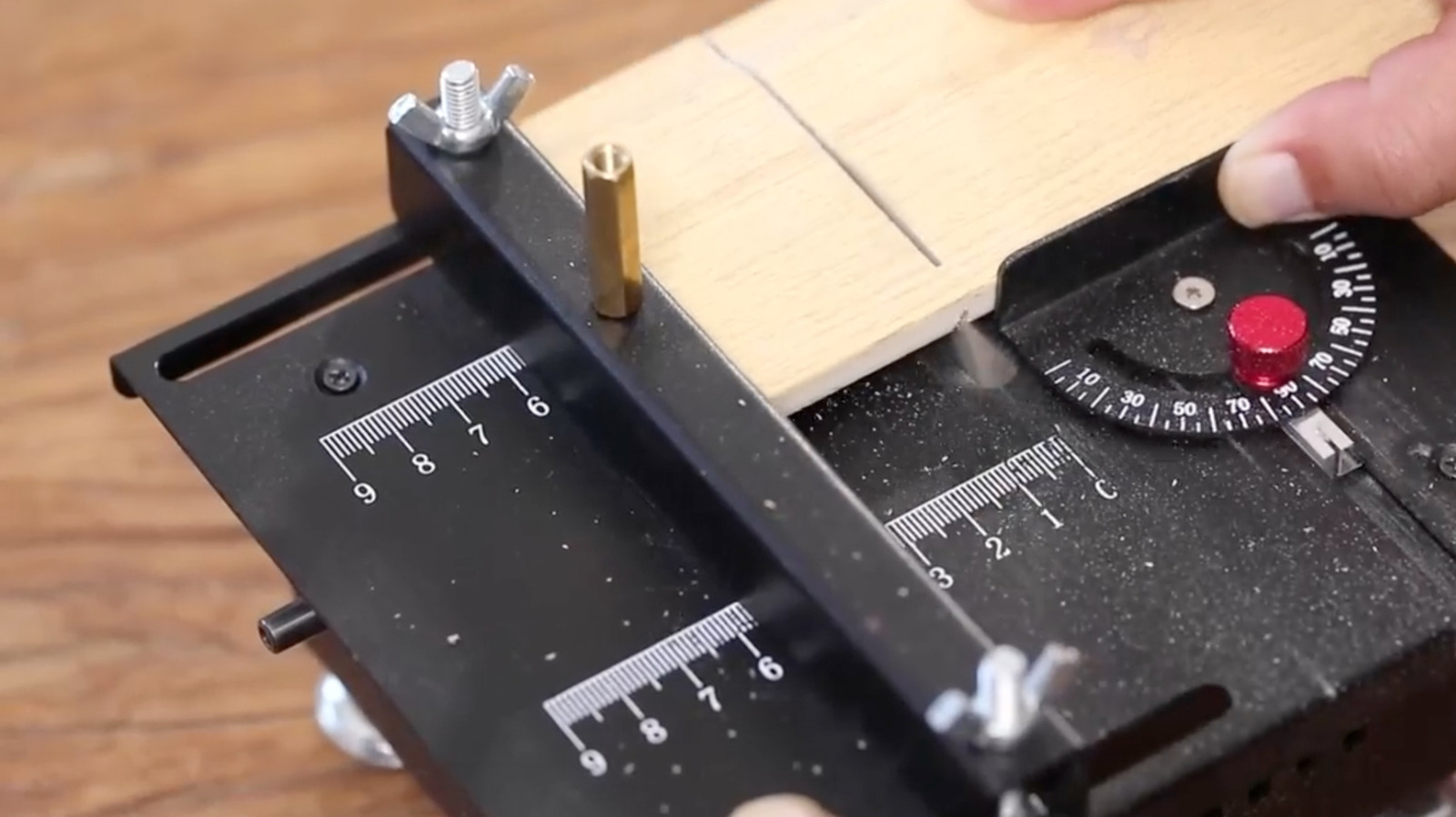How to Use SAM in Scala for Discriminator Criteria Types
In Scala, using type members and type classes can lead to complex code, particularly when dealing with self-referential types. This article guides you through calling the getFor method from a SAM trait called DiscriminatorCriteria, utilizing Scala's powerful type system and quoted expressions. Understanding DiscriminatorCriteria Trait The DiscriminatorCriteria trait defines a method getFor that takes a type parameter report.error("Unsupported type structure") } } } Step 2: Calling getFor Method In the section where we pattern match on elemTypes, we will generate code to invoke getFor. Be sure to correctly pass headType while conforming to the type bounds. case '[headType *: tailTypes] => val discriminatorCriteriaExpr = Expr.summon[DiscriminatorCriteria[A]].getOrElse( report.error("DiscriminatorCriteria is not defined") ) val discriminator: Expr[Int] = '{ $discriminatorCriteriaExpr.getFor[headType] } Here, discriminatorCriteriaExpr is an expression that summons the appropriate DiscriminatorCriteria. The important note here is that headType must satisfy the required upper bound, which is A. Handling Type Mismatches To prevent the compiler from throwing upper bound errors: Ensure that headType derives correctly from A. You might need to introduce a type constraint or use a different approach to ensure conformity within your type definitions. Review the type structure to ensure that each type you pass maintains the expected bounds and relationships. Frequently Asked Questions What is SAM in Scala? SAM stands for Single Abstract Method, a pattern that allows you to define functional interfaces for concise lambda expressions in Scala. How do I handle reflections in Scala? Use Scala's reflection capabilities through scala.reflect.runtime.universe or scala.quoted for macro annotations. Ensure that your types are well-defined and compliant. What to do if I encounter type inferring issues? Check your type bounds and ensure that the types you are working with inherit correctly from the parents. You can also use explicit type annotations for better clarity. Conclusion This post outlined how to work with the DiscriminatorCriteria trait and call its getFor method using Scala's type system and quotations. By following the structured approach above, you can navigate common pitfalls related to type bounds effectively and derive robust serializers with ease. Feel free to explore more about Scala's reflection and type systems to enhance your macros and functional programming skills.

In Scala, using type members and type classes can lead to complex code, particularly when dealing with self-referential types. This article guides you through calling the getFor method from a SAM trait called DiscriminatorCriteria, utilizing Scala's powerful type system and quoted expressions.
Understanding DiscriminatorCriteria Trait
The When working with mirrors and type reflections in Scala, particularly in macros or complex type derivation, it is common to encounter type mismatches. In your case, the issue arises when specifying To successfully call the First, ensure you have your derive serializer implementation set up correctly. This function will extract the In the section where we pattern match on Here, To prevent the compiler from throwing upper bound errors:
SAM stands for Single Abstract Method, a pattern that allows you to define functional interfaces for concise lambda expressions in Scala.
Use Scala's reflection capabilities through Check your type bounds and ensure that the types you are working with inherit correctly from the parents. You can also use explicit type annotations for better clarity.
This post outlined how to work with the DiscriminatorCriteria trait defines a method getFor that takes a type parameter trait DiscriminatorCriteria[A] {
def getFor[V <: A]: Int
}
The Issue at Hand
headType as a type argument for the getFor method. This happens due to the strict upper bound A of the getFor method not being met by the inferred type from headType.
Step-by-Step Solution
getFor method on an instance of DiscriminatorCriteria, follow these steps:
Step 1: Define Your Derive Serializer Implementation
MirroredElemTypes necessary to provide the correct encapsulated types for calling the getFor method.
import scala.quoted.*
import scala.deriving.Mirror
def deriveSerializerImpl[A: Type](using quotes: Quotes): Expr[Serializer[A]] = {
import quotes.reflect.*
Expr.summon[Mirror.Of[A]] match {
case Some('{ $m: Mirror.SumOf[A] {type MirroredElemTypes = elemTypes} }) =>
Type.of[elemTypes] match {
case '[headType *: tailTypes] =>
// Further implementation needed
case _ =>
report.error("Unsupported type structure")
}
}
}
Step 2: Calling getFor Method
elemTypes, we will generate code to invoke getFor. Be sure to correctly pass headType while conforming to the type bounds.
case '[headType *: tailTypes] =>
val discriminatorCriteriaExpr = Expr.summon[DiscriminatorCriteria[A]].getOrElse(
report.error("DiscriminatorCriteria is not defined")
)
val discriminator: Expr[Int] = '{ $discriminatorCriteriaExpr.getFor[headType] }
discriminatorCriteriaExpr is an expression that summons the appropriate DiscriminatorCriteria. The important note here is that headType must satisfy the required upper bound, which is A.
Handling Type Mismatches
headType derives correctly from A. You might need to introduce a type constraint or use a different approach to ensure conformity within your type definitions.Frequently Asked Questions
What is SAM in Scala?
How do I handle reflections in Scala?
scala.reflect.runtime.universe or scala.quoted for macro annotations. Ensure that your types are well-defined and compliant.
What to do if I encounter type inferring issues?
Conclusion
DiscriminatorCriteria trait and call its getFor method using Scala's type system and quotations. By following the structured approach above, you can navigate common pitfalls related to type bounds effectively and derive robust serializers with ease.
Feel free to explore more about Scala's reflection and type systems to enhance your macros and functional programming skills.





































































































































































![[The AI Show Episode 145]: OpenAI Releases o3 and o4-mini, AI Is Causing “Quiet Layoffs,” Executive Order on Youth AI Education & GPT-4o’s Controversial Update](https://www.marketingaiinstitute.com/hubfs/ep%20145%20cover.png)




























































































































![[DEALS] Microsoft 365: 1-Year Subscription (Family/Up to 6 Users) (23% off) & Other Deals Up To 98% Off – Offers End Soon!](https://www.javacodegeeks.com/wp-content/uploads/2012/12/jcg-logo.jpg)




![From Art School Drop-out to Microsoft Engineer with Shashi Lo [Podcast #170]](https://cdn.hashnode.com/res/hashnode/image/upload/v1746203291209/439bf16b-c820-4fe8-b69e-94d80533b2df.png?#)




















![Re-designing a Git/development workflow with best practices [closed]](https://i.postimg.cc/tRvBYcrt/branching-example.jpg)




















































































(1).jpg?#)






























_Inge_Johnsson-Alamy.jpg?width=1280&auto=webp&quality=80&disable=upscale#)





























































































![The Material 3 Expressive redesign of Google Clock leaks out [Gallery]](https://i0.wp.com/9to5google.com/wp-content/uploads/sites/4/2024/03/Google-Clock-v2.jpg?resize=1200%2C628&quality=82&strip=all&ssl=1)
![What Google Messages features are rolling out [May 2025]](https://i0.wp.com/9to5google.com/wp-content/uploads/sites/4/2023/12/google-messages-name-cover.png?resize=1200%2C628&quality=82&strip=all&ssl=1)














![New Apple iPad mini 7 On Sale for $399! [Lowest Price Ever]](https://www.iclarified.com/images/news/96096/96096/96096-640.jpg)
![Apple to Split iPhone Launches Across Fall and Spring in Major Shakeup [Report]](https://www.iclarified.com/images/news/97211/97211/97211-640.jpg)
![Apple to Move Camera to Top Left, Hide Face ID Under Display in iPhone 18 Pro Redesign [Report]](https://www.iclarified.com/images/news/97212/97212/97212-640.jpg)
![Apple Developing Battery Case for iPhone 17 Air Amid Battery Life Concerns [Report]](https://www.iclarified.com/images/news/97208/97208/97208-640.jpg)





































































































